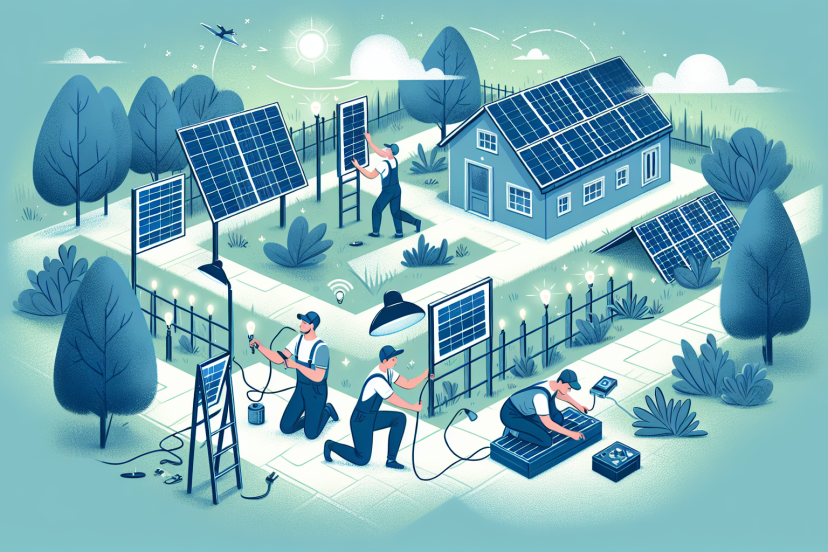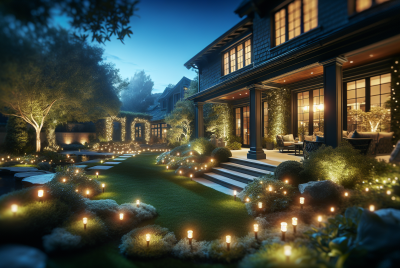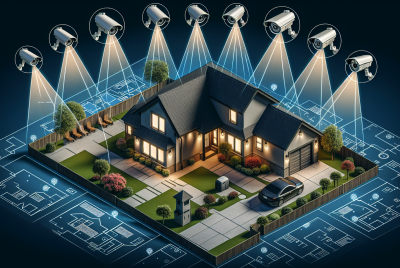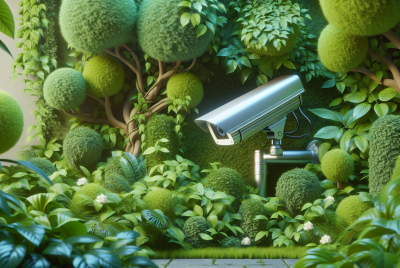The Ultimate Guide To Installing Solar-Powered Outdoor Lights
Imagine transforming your outdoor space into a mesmerizing oasis with the warm glow of solar-powered outdoor lights. From enhancing the security of your property to creating an enchanting ambiance for your evening gatherings, these lights offer countless benefits. This ultimate guide will walk you through the easy installation process, ensuring that your outdoor space is not only eco-friendly but also beautifully illuminated. Say goodbye to expensive electricity bills and embrace the elegance and efficiency of solar-powered outdoor lights.
Choosing the Right Solar-Powered Outdoor Lights
When it comes to choosing solar-powered outdoor lights, it’s important to understand your lighting needs. Consider the purpose of the lights – whether you want them for security, ambiance, or to highlight certain landscape features. This will help you determine the brightness and type of light that you need.
Additionally, consider the location and exposure to sunlight. Assess the areas in your outdoor space that receive direct sunlight and those that are shaded. This will help you decide where to install the lights for maximum sun exposure and optimal performance.
Lastly, explore the different types of solar lights available in the market. From string lights to spotlights, there is a wide range of options to choose from. Take into account factors such as the durability, design, and functionality of the lights to find the perfect fit for your outdoor space.
Preparing for Installation
Before diving into the installation process, there are a few important steps to take. First, gather the necessary tools and materials required for the installation. This might include a ladder, drill, screws, and wire cutters. Having everything on hand will make the installation process smoother.
Next, check the equipment and solar panels for any damage or defects. Make sure that everything is in working condition before proceeding with the installation. If you notice any issues, contact the manufacturer or supplier for assistance.
Lastly, determine the installation area for the lights. Consider the desired placement and make sure it aligns with your lighting needs. Take note of any obstructions or potential hazards that may need to be addressed before installation.
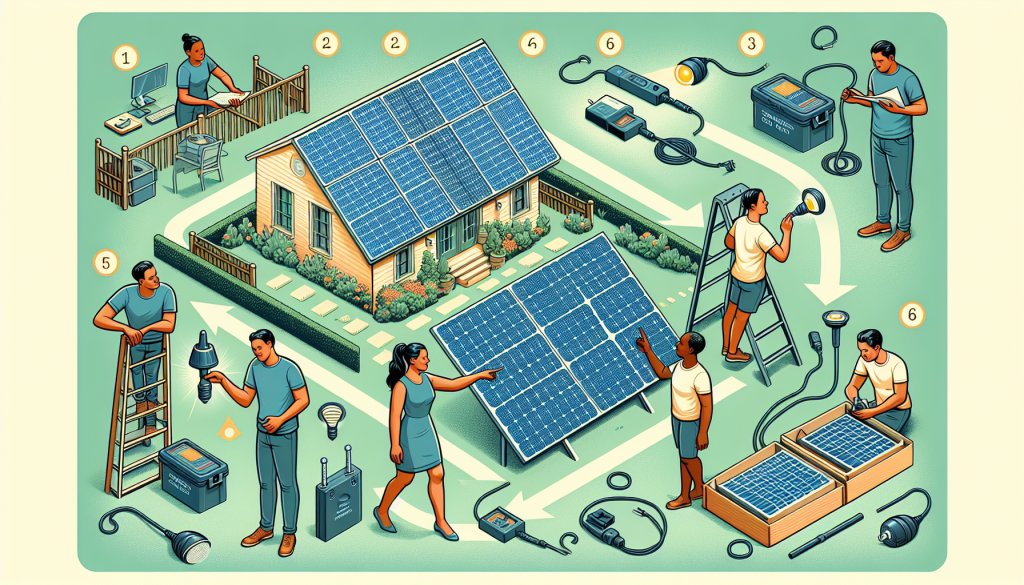
Step-by-step Installation Process
Now that you’re well-prepared, let’s dive into the step-by-step installation process:
-
Positioning the Solar Panel: Find an area that receives direct sunlight for most of the day. Install the solar panel in a location where it can capture the maximum amount of sunlight. It’s important to ensure that the panel is facing south for optimal sun exposure.
-
Mounting the Light Fixture: Use a ladder and drill to mount the light fixture in the desired location. Make sure it is secured properly to avoid any accidents or damage. Consider the angle and height of the fixture to ensure it provides the best lighting coverage.
-
Connecting the Solar Panel and Light Fixture: Follow the instructions provided by the manufacturer to properly connect the solar panel and light fixture. This usually involves connecting the wires and ensuring a secure and watertight connection.
-
Securing the Wiring: Use clips or adhesive hooks to secure the wiring along the installation area. This will prevent any tripping hazards and keep the wires tidy and organized.
-
Testing the Lights: Once the installation is complete, test the lights to ensure they are working properly. Allow the solar panels to charge for a full day before conducting the test. If the lights do not turn on, double-check the connections and troubleshooting section for assistance.
Solar Panel Maintenance
To ensure the longevity and efficiency of your solar panels, regular maintenance is essential. Here are some tips for maintaining your solar panels:
-
Cleaning the Solar Panels: Regularly clean the solar panels to remove dirt, dust, and other debris that may hinder their performance. Gently scrub the surface with a non-abrasive sponge or cloth and use water or a mild detergent if needed. Avoid using abrasive materials or harsh chemicals that could damage the panels.
-
Inspecting and Repairing Damaged Panels: Regularly inspect the solar panels for any signs of damage such as cracks or loose connections. If you notice any issues, contact a professional for repair or replacement.
-
Maximizing Sun Exposure: Periodically check the position and tilt of the solar panels to ensure they are facing the sun properly. Adjust the angle if necessary to maximize sun exposure and optimize the efficiency of the panels.
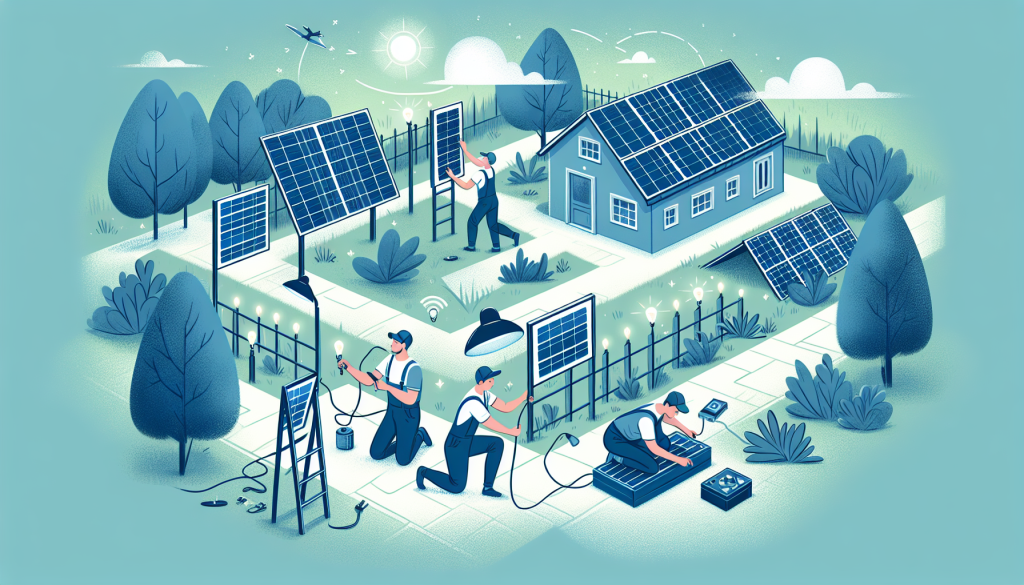
Tips for Optimal Performance
Here are some additional tips to enhance the performance of your solar-powered outdoor lights:
-
Choosing the Right Location: When installing the lights, choose a location that receives ample sunlight throughout the day. Avoid areas that are heavily shaded or obstructed by trees or buildings.
-
Adjusting the Solar Panel Tilt and Angle: Depending on your geographical location and the time of year, you may need to adjust the tilt and angle of the solar panels to maximize sun exposure. Consider the seasonal changes in the sun’s angle and make necessary adjustments accordingly.
-
Checking and Replacing Batteries: Regularly check the batteries in your solar lights and replace them if necessary. Old or faulty batteries can affect the performance of the lights.
-
Using Dusk-to-Dawn Sensors: Consider using solar lights with built-in dusk-to-dawn sensors. These sensors automatically turn the lights on at dusk and off at dawn, saving energy and enhancing convenience.
-
Considering Motion Sensor Functionality: For security purposes, opt for solar lights with motion sensor functionality. These lights will automatically turn on when motion is detected, providing an extra layer of security for your outdoor space.
Troubleshooting and Common Issues
Even with proper maintenance and care, solar-powered outdoor lights may encounter some common issues. Here’s how to troubleshoot and address these problems:
-
Identifying and Fixing Battery Problems: If your solar lights are not working, it could be due to battery issues. Check if the batteries are properly inserted and securely connected. If the batteries are old or damaged, replace them with new ones.
-
Addressing Dim or Flickering Lights: Dim or flickering lights may indicate a loose connection or a problem with the solar panel. Double-check the connections and make sure everything is properly secured. If the issue persists, contact the manufacturer or a professional for assistance.
-
Dealing with Water Damage: Outdoor solar lights are exposed to the elements, and water damage can occur over time. If you notice any water leakage or damage, remove the affected components, dry them thoroughly, and consult a professional if needed.
-
Resolving Wiring Issues: If the lights are not turning on or the wiring seems faulty, carefully inspect the wiring for any damage or loose connections. Repair or replace any damaged wiring as necessary.
-
Repairing or Replacing Light Bulbs: If the light bulbs in your solar lights are not working, make sure they are securely connected and not burnt out. Replace any faulty bulbs with new ones to restore proper functionality.
Safety Precautions
When installing and maintaining solar-powered outdoor lights, it’s important to prioritize safety. Here are some safety precautions to keep in mind:
-
Working with Electricity: Exercise caution when working with electricity. If you are not confident in your electrical skills, consider hiring a professional electrician for the installation process.
-
Using Proper Tools and Equipment: Always use the right tools and equipment for the job. Using incorrect or faulty tools can lead to accidents and damage.
-
Avoiding Damage to Underground Utilities: Before digging or installing lights in the ground, know the location of any underground utilities to avoid damage. Contact your local utility companies or use a utility locating service to mark the utility lines.
-
Following Manufacturer Instructions: Read and follow the manufacturer’s instructions for installation and maintenance. These instructions provide important safety and operational information specific to your solar lights.
-
Ensuring Proper Grounding: Properly ground your solar lights to minimize the risk of electric shock or damage. Follow the manufacturer’s guidelines for grounding or consult a professional if needed.
Eco-Friendly Benefits of Solar Outdoor Lighting
In addition to the convenience and beauty they bring to your outdoor space, solar-powered outdoor lights offer several eco-friendly benefits:
-
Reducing Energy Consumption: Solar lights use renewable energy from the sun, which reduces the demand for traditional electricity sources. This helps to lower overall energy consumption and dependence on fossil fuels.
-
Lowering Carbon Footprint: By choosing solar lights, you decrease the carbon emissions associated with traditional lighting options. Solar lights do not produce greenhouse gases or contribute to air pollution.
-
Contributing to Sustainable Practices: Solar outdoor lighting aligns with sustainable practices by harnessing the power of the sun. By using renewable energy, you actively contribute to a greener and more sustainable future.
Making the Most of Solar-Powered Outdoor Lights
Solar-powered outdoor lights offer numerous opportunities to enhance your outdoor space. Here are some ways to make the most of them:
-
Enhancing Security with Solar Lights: Install solar lights strategically around your property to enhance security. By illuminating dark corners and entry points, you can deter potential intruders and increase the safety of your outdoor space.
-
Creating an Inviting Ambiance: Use solar string lights or lanterns to create a warm and inviting ambiance in your outdoor area. Hang them on trees, fences, or pergolas to add a touch of magic and charm.
-
Accentuating Landscape Features: Highlight your favorite landscape features such as plants, sculptures, or pathways with solar spotlights. These lights can draw attention to the unique elements of your outdoor space and create a stunning visual impact.
Conclusion
Installing solar-powered outdoor lights is a great way to add functionality, beauty, and eco-friendliness to your outdoor space. By understanding your lighting needs, choosing the right lights, and following the installation and maintenance process, you can enjoy the benefits of solar-powered lighting for years to come. With proper care and attention, your outdoor area will be transformed into a welcoming and sustainable oasis. Embrace the power of the sun and illuminate your nights with solar-powered outdoor lights.

